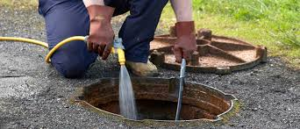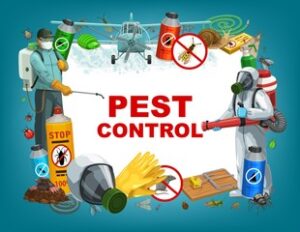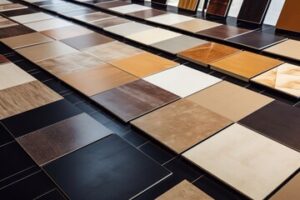Sewer Inspections Los Angeles involve running a specialized, waterproof camera through your sewer line. The technician will observe the live feed on a monitor and carefully examine the condition of your pipes, looking for issues like cracks or leaks.
There are many benefits to getting a thorough sewer inspection. Here are three of the most important:

A sewer inspection involves going through your home’s pipes with a camera. You will receive a detailed report afterward with information about the condition of your pipes, including any damage or potential issues that you need to be aware of. You can also use this information to schedule maintenance on your pipes or to make repairs.
Sewer and drain inspection cameras are indispensable tools for home inspectors, plumbers, and other professionals who work in the plumbing industry. However, they can experience technical difficulties from time to time. Image quality problems, maneuverability issues, and software glitches are just a few of the challenges that these cameras can face. However, with a little troubleshooting, you can resolve many of these issues and continue using your sewer inspection camera effectively.
While a home’s plumbing system can have a variety of problems, Jason Murton with Accurate Inspections, LLC, explains that some problems are more common than others. One such issue is poor pipe material, which can lead to leaks or breakages over time. Another issue is rapid ground freeze-thaw cycles, which can stress lines that are close to the surface. Finally, issues with aging equipment can also cause problems.
If you’re a homeowner looking to sell your property, a sewer scope inspection can help you identify any potential problems before the sale process begins. You can then negotiate with buyers or include the cost of any necessary repairs in the purchase price to avoid unpleasant surprises down the road.
Having knowledge about the state of your sewer line can also help you plan for future expenses. For example, if your inspection reveals that there is a large blockage within 30 feet of your house, you can budget for repairs or consider if it would be better to just buy a new home altogether.
Having a reliable sewer inspection company can save you money, hassle, and stress in the long run. By identifying and addressing potential issues with your sewer line before they become a major problem, you can minimize costly repairs and avoid the health risks that come along with clogged or damaged pipes.
Preventing Future Damage
A sewer scope inspection is a valuable tool for identifying issues that may impact the integrity of pipes or lead to costly repairs. As a result, property owners can take preventative measures to ensure the long-term health of their plumbing system.
Homeowners can benefit from the information gleaned from this assessment by taking advantage of deals and discounts offered by local service providers. This will lower the cost of hiring professionals to perform a detailed analysis of the state of their home’s pipes and provide insight into future maintenance needs.
Having this data can also be beneficial in negotiations when selling a property. Homebuyers can use the findings of a sewer inspection as leverage to request that the seller either makes necessary repairs or provides a discount on the overall sale price. In this way, buyers can avoid unpleasant and expensive surprises after purchasing a new property.
Regular sewer inspections can also help homeowners identify typical problems like root intrusion, cracks or damage, and blockages in the line before they turn into more serious and expensive issues. For instance, if your home’s sewer lines are older and prone to failure, it is important to have routine inspections to ensure that tree roots do not enter the pipes or cause a collapse.
In addition, a professional inspector can spot potential issues like ground shift that may affect the slope of the pipe or cause leaks. Ground shift can happen over time due to seismic occurrences, underground water changes, or excavation near your home’s plumbing pipes. A skilled professional can identify these shifts in the pipe and correct them before they become a serious problem that requires expensive repair work.
Another useful method of identifying a leak or defect in the pipes is smoke testing. This method involves blowing non-toxic smoke into the pipes and observing its reaction. The smoke will escape through any cracks or defects in the pipe’s interior, allowing professionals to pinpoint the exact location of the issue. This can save significant time and money when compared to digging up entire sections of the pipe.
Getting Rid of Clogs
When a sewer line gets clogged, it’s usually a pretty clear indicator that something is wrong. If you’ve noticed lingering sewage smells in your home, clogged toilets or slow draining sinks and tubs, it could be time to call a plumber for a sewer inspection. A professional can use a camera to find the source of the problem and recommend the best course of action to get rid of it.
A good inspector will double-check their equipment before starting the job to make sure it’s in working order. Then they will establish an access point and put down protective coverings to avoid any damage during the process. Once the inspection is complete, your plumber will be able to tell you exactly what is causing the clog so they can get it fixed right away.
The most common cause of a clogged sewer pipe is people putting the wrong things down the drains. This includes items like paper towels, baby wipes, grease and other solid waste. It can also be caused by tree roots that have infiltrated the pipes or a structural issue with the lines themselves. To prevent clogs, you should only flush toilet paper and human waste down the line, and you should clean your drains with enzyme cleaners monthly.
If you do notice a clog, it’s important to act quickly. The longer you wait, the worse the problem will get. A professional can use a variety of tools to get rid of the clog and restore your sewer lines to full function.
Getting a sewer inspection can help you save money in the long run. It will give you a better idea of the condition of the sewer line and can help you choose the best contractor to fix any issues that come up. If you’re thinking of buying a new home, it’s also a great way to make sure the current owners haven’t done any damage to the line that could affect your health and safety. Contact a local plumbing company for more information about sewer inspections and how they can benefit you.
Affordability
A professional sewer line inspection can give you a clear picture of what is going on underground. It can help you save money by identifying issues that you can address now, before they become major problems later. The cost of a sewer inspection will depend on the length of pipe that needs to be inspected, as well as any obstructions that may be found. However, a plumbing business can often offer you deals and discounts that will make this service more affordable.
A home buyer should always get a sewer inspection before they close on a property. This will ensure that the previous owner did not leave any damage or clogs behind. It will also give them peace of mind knowing that they are not taking on any costly repair bills right away. A seller can also benefit from having a sewer inspection done before listing their property. This can help them attract potential buyers and increase the likelihood of a sale.
Having a sewer inspection can also be an excellent opportunity to upgrade or replace your old pipes. Newer pipes are more durable and can withstand more pressure than older ones. Having newer pipes can also help reduce the risk of future problems, like clogs and leaks. A sewer scope can identify what material your current pipes are made from so that you can choose the best replacement option.
Some signs that your sewer line is in need of an inspection include slow draining or sewage backups. These can indicate that there is a blockage or serious damage in the line. Unpleasant odors coming from your drains can also be an indicator of a problem. A qualified inspector will be able to tell you what is causing the smell, as well as recommend the best course of action.
A sewer inspection is a great way to ensure that your home’s plumbing system is in good condition. It is a small investment that can save you from large, costly repairs down the road. A professional plumber can perform a visual inspection using a camera that is inserted into the sewer pipe. The video feed can then be viewed on a monitor so that the technician can see any cracks, damage, or obstructions that are present in the pipes.







